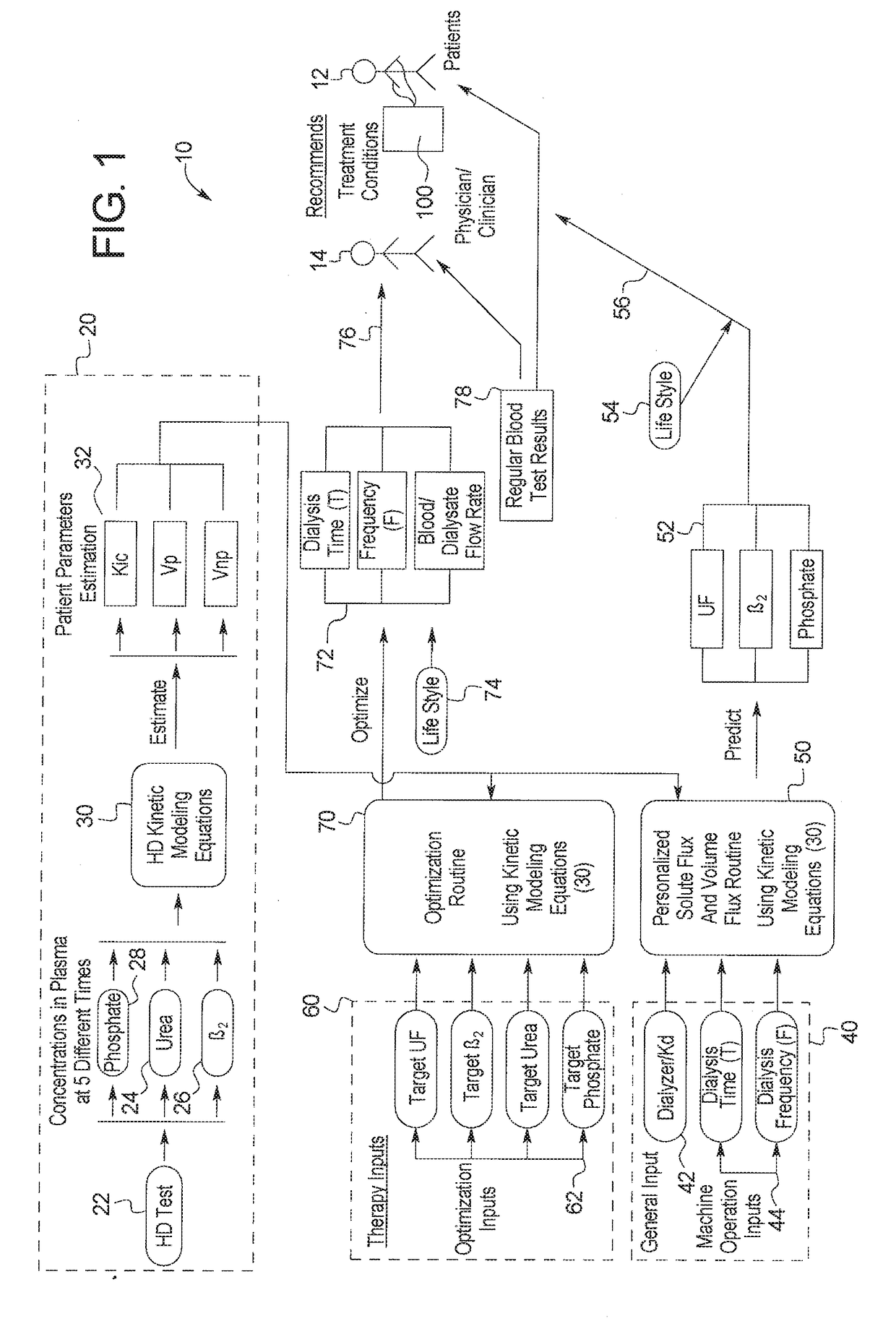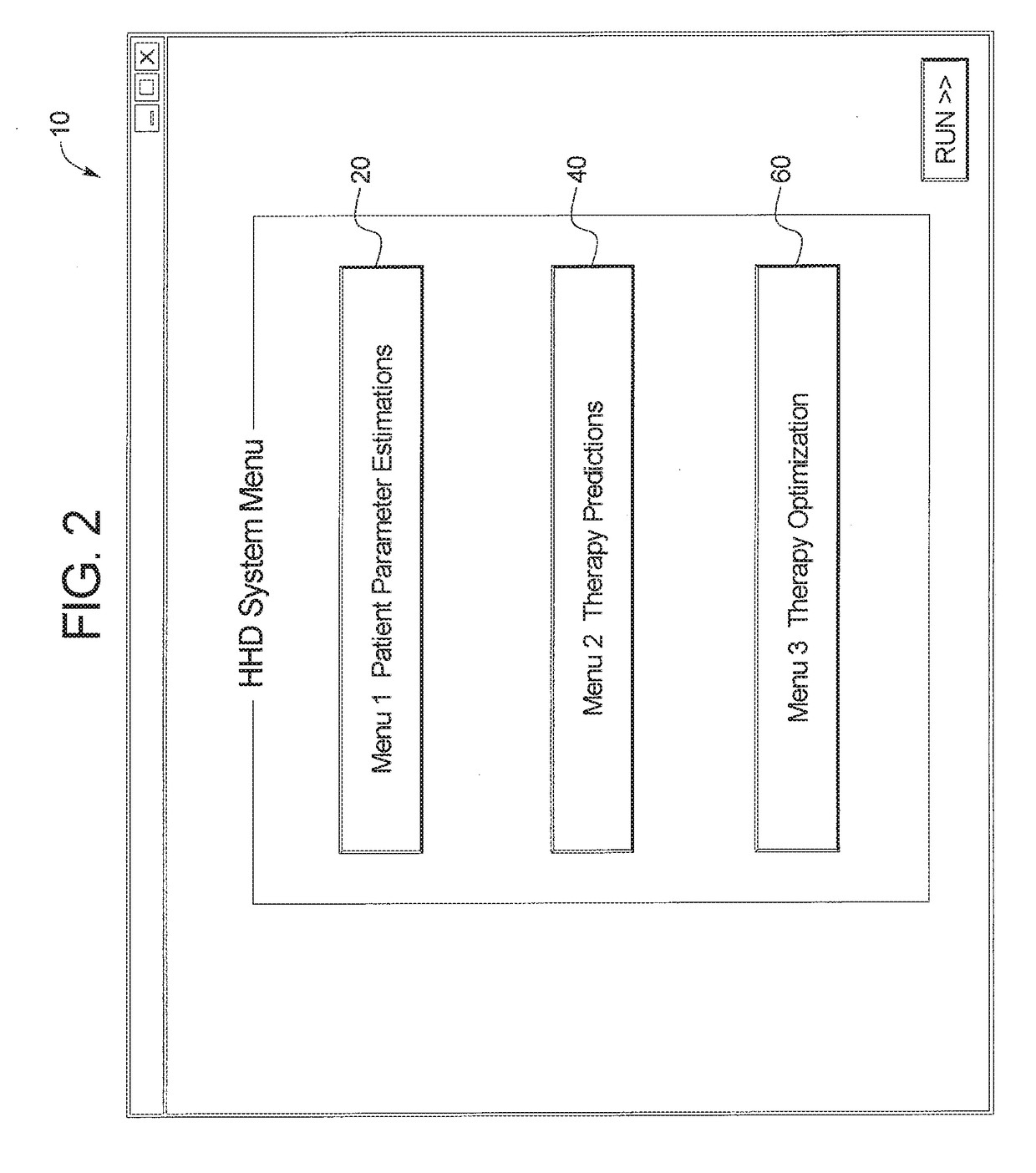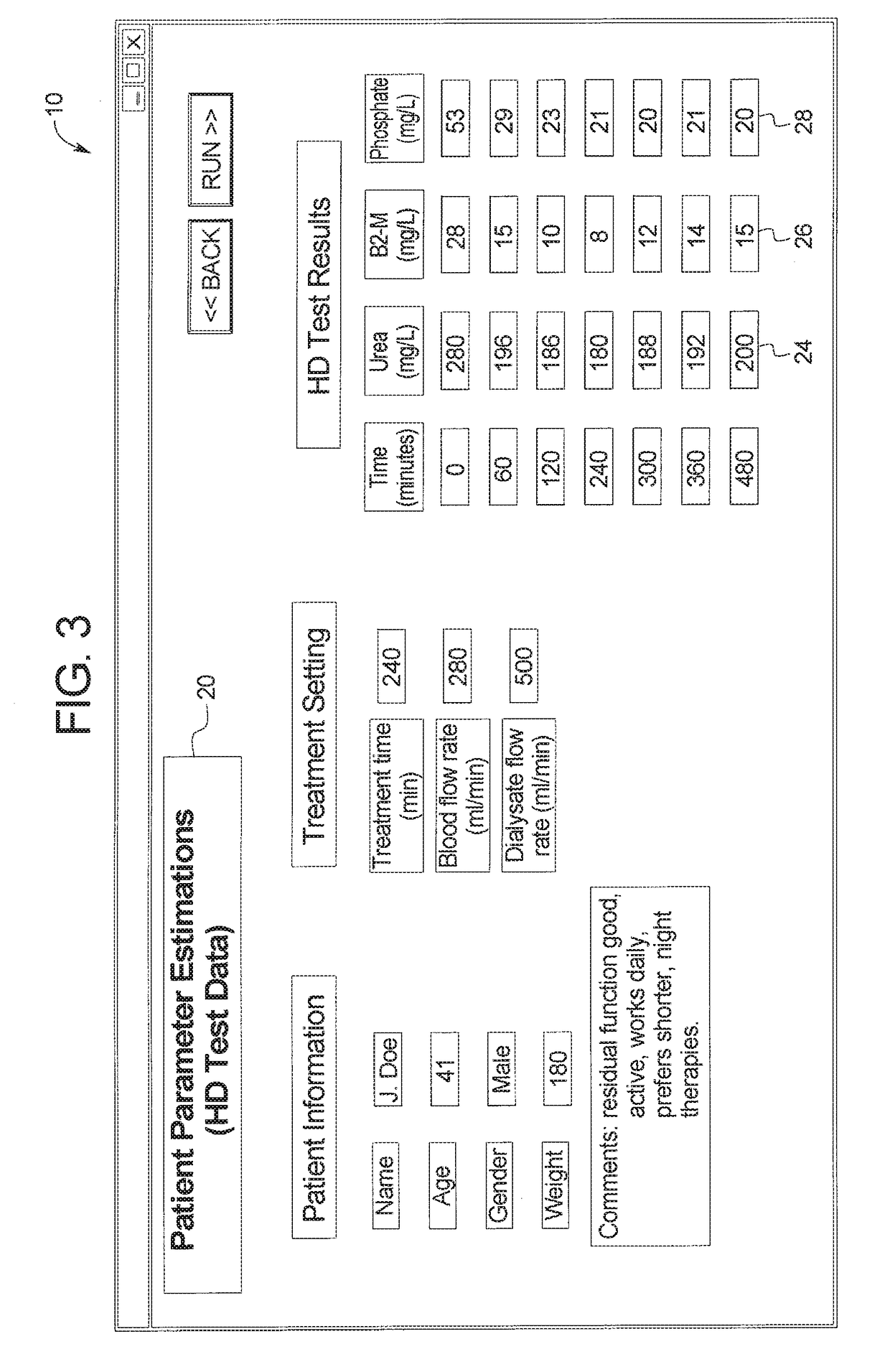Therapy prediction and optimization for renal failure blood therapy, especially home hemodialysis
a technology for predicting and optimizing hemodialysis and hemodialysis, which is applied in the field of dialysis systems, can solve the problems of insufficient convective clearance, limited acceptance of the date, and the simple drag of the ultrafiltrate removal, so as to improve the quality of life, improve the effect of hemodialysis, and accurately predict the steady sta
- Summary
- Abstract
- Description
- Claims
- Application Information
AI Technical Summary
Benefits of technology
Problems solved by technology
Method used
Image
Examples
example 1
Objective
[0179]The objective of this analysis was to demonstrate the non-linear least squares fitting procedure for estimating patient specific parameters (e.g., KM and VPRE) from a pseudo one-compartment model using clinical data, and to evaluate the validity of parameter estimates over different HD treatment modalities.
Pseudo One-Compartment Model
[0180]A conceptual description of the pseudo one-compartment model is shown in FIG. 11. In this model, phosphorus is removed by the dialyzer from a compartment of volume V, also called the distribution volume, and phosphorus concentration C. The distribution volume is assumed to be in equilibrium with plasma. Phosphorus mobilization into this compartment occurs from phosphorus pools in the body that are inaccessible to the dialyzer. These pools are represented as a large compartment with a constant phosphorus concentration equal to the pre-dialytic plasma phosphorus concentration (“CPRE”). The rate of phosphorus mobilization into the dist...
example 2
Objective
[0190]The objective of this study was to demonstrate the application of a simple method for estimating the patient parameter KM from a pseudo one-compartment model using data from conventional 4-hour hemodialysis treatments, and to evaluate the accuracy of estimated KM values via comparison to results obtained using non-linear least squares fitting.
Methods
[0191]Clinical data was obtained from 5 chronic hemodialysis patients who underwent CHD treatments. Blood samples were collected at t=0, 30, 60, 120, 180 min during the treatments and 10 seconds, 2, 10, 30, 60 min after the end of treatments. Dialysate samples were collected 60 min from the start of treatments to determine dialyzer phosphate clearance. Plasma and dialysate samples were assayed for phosphorus.
[0192]KM was computed for each patient using equation E-B1, where CPOST is the post-dialytic plasma phosphorus concentration, KD is the dialyzer phosphate clearance, QUF is the ultrafiltration rate or net fluid removal...
example 3
Steady State Phosphorus Mass Balance Model
Objectives
[0198]As previously discussed, the inventors have proposed a kinetic model for describing changes in serum or plasma phosphorus concentrations during hemodialysis (more generally extracorporeal treatments) and the post-dialytic rebound period. That kinetic model allows prediction of intradialytic phosphorus concentrations as a function of time and total phosphate removal from the knowledge of: 1) the pre-dialysis concentration of phosphorus in plasma or serum, 2) the dialyzer clearance of phosphate, 3) the volume of distribution of phosphorus, 4) the amount of fluid removed during the treatment, and 5) a patient-specific phosphorus mobilization clearance. The steady state phosphorus mass balance model described below will be used in combination with the previous kinetic model to allow determination of pre-dialysis serum phosphorus concentration for individual patients under any hemodialysis treatment prescription when the above par...
PUM
 Login to View More
Login to View More Abstract
Description
Claims
Application Information
 Login to View More
Login to View More - R&D
- Intellectual Property
- Life Sciences
- Materials
- Tech Scout
- Unparalleled Data Quality
- Higher Quality Content
- 60% Fewer Hallucinations
Browse by: Latest US Patents, China's latest patents, Technical Efficacy Thesaurus, Application Domain, Technology Topic, Popular Technical Reports.
© 2025 PatSnap. All rights reserved.Legal|Privacy policy|Modern Slavery Act Transparency Statement|Sitemap|About US| Contact US: help@patsnap.com



